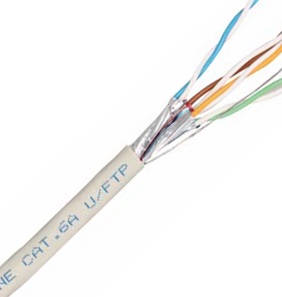Jun 10 2024
/
The Complete Guide to Straight Cable Color Codes
Whether you’re setting up a home network, working in IT, or just curious about networking, understanding straight cable color codes is essential. It’s not just about plugging in cables; correct wiring ensures efficient data transmission and network stability. This guide will walk you through everything you need to know about straight cable color codes, from the basics to step-by-step wiring instructions.

What is a Straight Cable?
A straight cable, also known as a straight-through cable, is a type of Ethernet cable used to connect devices of different types, such as a computer to a switch or a router. Unlike crossover cables, which connect similar devices (like two computers), straight cables have the same wiring sequence on both ends.
Why Are Color Codes Important?
Color codes in Ethernet cables are crucial for ensuring that the correct pins are connected to each other. Miswiring can lead to network failures, data loss, and potential hardware damage. Standard color codes make it easier to identify and troubleshoot issues.
The T568A and T568B Standards
There are two primary wiring standards for straight cables, both defined by the Telecommunications Industry Association (TIA):
- T568A
- T568B
Each standard has a unique color-coding scheme. While both standards are widely accepted, T568B is more commonly used in the United States.
T568A Color Code
- White/Green
- Green
- White/Orange
- Blue
- White/Blue
- Orange
- White/Brown
- Brown
T568B Color Code
- White/Orange
- Orange
- White/Green
- Blue
- White/Blue
- Green
- White/Brown
- Brown
It’s important to note that for a straight cable, the wiring sequence on both ends must adhere to the same standard, either T568A or T568B.
How to Wire a Straight Cable
Materials Needed
- Ethernet cable (Cat5e, Cat6, etc.)
- RJ45 connectors
- Crimping tool
- Wire stripper
- Cable tester (optional but recommended)
Step-by-Step Guide
- Strip the Cable
Use the wire stripper to remove about 2 inches of the outer jacket from both ends of the Ethernet cable.
- Untwist the Pairs
You will see four twisted pairs of wires. Carefully untwist them and arrange them according to the chosen color code (T568A or T568B).
- Align the Wires
Flatten the wires and trim them to ensure they are all the same length. Leave about half an inch of the wires exposed.
- Insert into RJ45 Connector
Hold the RJ45 connector with the clip facing down. Insert the wires into the connector, making sure each wire goes into its respective slot.
- Crimp the Connector
Place the connector into the crimping tool and press firmly to secure the wires in place.
- Repeat on the Other End
Follow the same steps to prepare and crimp the other end of the cable, ensuring you use the same color code.
- Test the Cable
Use a cable tester to verify that all connections are correctly made and that the cable is functional.
Common Mistakes to Avoid
- Mixing Standards: Avoid mixing T568A and T568B standards within the same network as it can cause connectivity issues.
- Improper Crimping: Ensure the wires are fully inserted and the connector is properly crimped to avoid loose connections.
- Skipping Testing: Always test your cables before finalizing the installation to catch any wiring errors.
Conclusion
Understanding and correctly implementing straight cable color codes is crucial for any networking task. By following the T568A or T568B standards and carefully wiring your cables, you can ensure a reliable and efficient network setup.
Frequently Asked Questions
What is the difference between T568A and T568B color coding?
T568A and T568B are two different wiring standards for arranging the individual wires within the RJ45 connectors. The main difference is the order in which the colored wires are arranged. Both standards will function the same technically, but it is important to use the same standard on both ends of the cable to ensure proper communication.
Can I use a crossover cable instead of a straight cable?
Crossover cables are used to connect two similar devices directly, such as two computers. Straight cables, on the other hand, are used to connect different types of devices, like a computer to a switch or a router. Using a crossover cable in place of a straight cable may cause connectivity issues.
What tools do I need to crimp RJ45 connectors on a cable?
You will need a few basic tools to crimp RJ45 connectors: a cable stripper to remove the outer insulation, a crimping tool to attach the connectors, and a cable tester to ensure the connections are correctly made.
How do I know which color code to use?
The choice between T568A and T568B can depend on organizational standards or specific requirements. If you are creating a new network, T568B tends to be more common in the United States, but it’s best to check existing infrastructure or organizational guidelines to maintain consistency.
What should I do if my cable tester shows an error?
If your cable tester indicates an error, carefully examine both ends of the cable. Ensure that the color coding matches on both ends and that each wire is fully inserted into the RJ45 connectors. If necessary, cut off the connectors and redo the crimping process.
How long can my Ethernet cable be without losing signal quality?
The maximum recommended length for a standard Ethernet cable (Cat5e or Cat6) is 100 meters (328 feet). Beyond this length, you may experience signal degradation and reduced performance.
